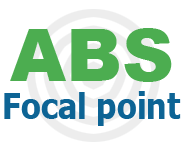|
|
[For the Dutch version, see the ABS Focal Point website.] Welcome to the sixth ABS Focal Point newsletter! In this newsletter we welcome Brazil as the 130th Party to the Nagoya Protocol, look at different policy options on digital sequence information (DSI), discuss characterisation and phylogenetic analysis in the context of the EU ABS Regulation, highlight some useful ABS resources and look back on the EU ABS Networking event. This newsletter contains:
|
|
Brazil 130th Party to the Nagoya ProtocolOn 2 June 2021, Brazil became the 130th Party to the Nagoya Protocol. Brazil ratified the Nagoya Protocol on 4 March and became a Party 90 days later. Now that Brazil has become a Party to the Nagoya Protocol, the user obligations of the EU ABS Regulation also apply to the utilisation of Brazilian genetic resources in the EU. This means that users have to exercise due diligence to ascertain that Brazilian genetic resources and traditional knowledge associated with genetic resources have been accessed in accordance with the Brazilian ABS rules. It may be necessary for users in the EU to submit a due diligence declaration when using Brazilian genetic resources that are obtained on or after 2 June 2021. It is important to note that the national ABS legislation of Brazil applies to genetic material of which utilisation took or takes place after the Brazilian Biodiversity Law came into force (17 November 2016), even if access took place before this date. This is due to the Brazilian definition of access to genetic resources: ‘research or technological development carried out on genetic information from plants, animals, and microbial species, or any other species, including substances originating from the metabolism of these living organisms’. On the other hand, the EU ABS Regulation only applies to Brazilian genetic resources and traditional knowledge associated with genetic resources accessed on or after 2 June 2021. More information about the ABS rules and regulations of Brazil is available in its country profile on the ABS Clearing-House website and through the Brazilian ABS National Focal Point, of which the contact details are also available on the ABS Clearing-House website. |
|
Policy options for Access and Benefit-Sharing (ABS) and Digital Sequence Information (DSI)An international discussion is currently taking place on whether the use of genomic information (“digital sequence information” or DSI) on genetic resources should be subject to Access and Benefit-Sharing (ABS) obligations. Various policy options on how to deal with access to and benefit-sharing from the use of DSI have been developed. The Dutch ABS Competent National Authority is interested in hearing the experiences of Dutch stakeholders with DSI and their opinions on the DSI policy options. In the previous newsletter (May 2021) we explained that it is currently being discussed if the use of genomic information, similar to the use of genetic resources, should also be subject to access and benefit-sharing obligations. In this discussion, genomic information (and sometimes other information on genetic resources as well) is usually referred to as ‘digital sequence information’ (DSI), although the term DSI is not clearly defined. In general, consensus exists that access to and use of DSI is extremely important for the conservation of biodiversity and sustainable development. However, views diverge on whether access to DSI and the sharing of benefits from its use are currently fair and equitable. Countries also have different opinions on whether and how access to DSI and benefit-sharing from its utilisation should be regulated. This divergence in opinions has become a major barrier to finding agreement on DSI and other aspects of the Convention on Biological Diversity (CBD) and other international agreements. A range of options/scenarios of how to deal with access to and benefit-sharing from the use of DSI on genetic resources have been developed (a more detailed overview can be found on the website of the CBD).
In the framework of the CBD, these options will be discussed in the Third Meeting of the Open-ended Working Group (OEWG) on the Post-2020 Global Biodiversity Framework, which will take place as a virtual meeting from 23 August to 3 September 2021. It is expected that decisions will be made during the Fifteenth meeting of the Conference of the Parties (COP) to the Convention on Biological Diversity, of which the dates are still to be determined. At the moment, the EU countries are contemplating and discussing the position to be taken during the OEWG in August/September. The ABS Competent National Authority of the Netherlands (Ms Kim van Seeters; k.vanseeters@minlnv.nl) remains highly interested in hearing the experiences of Dutch stakeholders with DSI and their opinions on the options that have been developed. |
|
Scope of the EU ABS Regulation: characterisation and phylogenetic analysisEarlier this year, the European Commission published a revised Guidance document on the EU ABS Regulation (Regulation (EU) 511/2014). The revised Guidance document provides more information on the scope and user obligations of the Regulation. In this article we highlight two topics regarding the scope: characterisation and phylogenetic analysis. In the ABS Focal Point newsletter of February 2021, we explained that taxonomic identification of genetic resources, by morphological or molecular analysis (including through use of DNA sequencing) is not considered to constitute utilisation in the meaning of the EU ABS Regulation, as it does not involve the discovery of specific genetic and/or biochemical properties. Taxonomic studies, where they do not look into genetic properties (functionality), are thus not within scope of the EU ABS Regulation. In this article we highlight two topics closely related to taxonomic identification: characterisation and phylogenetic analysis. Characterisation Characterisation is the description and documentation of the distinctive nature or features of genetic resources, which may include gene expression. If these activities do not involve the discovery of specific genetic and/or biochemical functions, it does not ‘create new insight into characteristics of the genetic resource which is of (potential) benefit to the further process of product development’ and therefore does not qualify as utilisation in the meaning of the EU ABS Regulation. For example, when a researcher examines morphological characteristics alone without examining or making use of the genetic influences on the morphology, this does not qualify as utilisation. However, if the activity does include research on specific genetic and/or biochemical properties of the genetic resources, the activity qualifies as utilisation. This is the case, for example, when research seeks the genetic background of traits of interest, to analyse which genes, gene complexes or regulatory sequences and mechanisms governing their expression are involved. For more information and case examples, see section 6.2 of the Guidance’s Annex II.
Phylogenetic analysis
Phylogenetic analysis is a type of data analysis which visualises relationships between samples, usually in the form of branching diagrams (‘trees’) or networks. It can be performed on all kinds of data, including gene functionality data. Research involving phylogenetic analysis using genetic resources may be aimed at identifying variation in identity of the species within and between populations and be similar to taxonomic identification. It may also be aimed at identifying such variation between species or taxa above species such as genus, tribe or family. Where phylogenetic analysis does not entail research and development into the genes, and the function of the genes or DNA sequences is neither investigated nor of interest, it is considered to be out of scope of the EU ABS Regulation. However, if phylogenetic analysis includes research on the function of the genes, it falls within the scope of the EU ABS Regulation. For more information and case examples, see section 6.3 of the Guidance’s Annex II. Want to know more about identification and characterisation in the context of the EU ABS Regulation? Read: ‘Utilisation: taxonomic identification and testing and reference tools’. |
|
ABS resources: where to find what?Since the adoption of the Nagoya Protocol over ten years ago, the amount of resources for access and benefit-sharing and compliance is ever increasing. In this article we take a closer look at a number of ABS resources for users of genetic resources. Since there are many ABS resources available, we think it would be useful to highlight some websites and best practices below. However, do take caution when using information provided by unofficial sources, as the information may be outdated or incorrect. Before using genetic resources, it is recommended to check the information on the provider country in the ABS Clearing-House and, if uncertainties remain, to contact the ABS National Focal Point (NFP) of the provider country through the contact details provided in the ABS Clearing-House to confirm the national ABS legislation. Websites The ABS Clearing-House (ABSCH) website is the official platform for ABS legislation and should be the first stop of every (future) user of genetic resources. The ABSCH provides national ABS legislation and legal requirements, the contact details of ABS National Focal Points and Competent National Authorities, ABS procedures, internationally recognised certificates of compliance (IRCC) and more. If you are reading this article, you are probably familiar with the Dutch ABS Focal Point website, which provides guidance for access to genetic resources from the Netherlands and abroad, gives background information on international rules and Dutch policy, and explains terms that are often used. Our ABS help tool aims to help you determine if your activities are in scope of the EU ABS Regulation and, if this is the case, your obligations under the Regulation. The ABS Information Forum aims to assist taxonomists and other scientists in their understanding of ABS and their capacity to manage ABS requirements. Apart from providing a large amount of background information, it also lists a host of tools and resources, including codes of conduct, best practices, model agreements and a self-assessment tool for ABS compliance by organisations. The Resources webpage of the Union of Ethical Biotrade (UEBT) contains various resources for businesses, including case studies and ABS fact sheets for a number of countries and regions, which give a brief overview of rules, requirements, considerations and relevant authorities. A new addition is the German Nagoya Protocol HuB, which is financed by the German government. While it is primarily targeted at researchers in the academic sector in Germany, it provides clear, easy-to-understand information about ABS and compliance for all users of genetic resources. Also interesting for users of genetic resources are the “Compliance Stories”, aimed at sharing experiences of users. Best practices Best practices on access and benefit-sharing can help users of genetic resources to comply with the EU ABS Regulation (Regulation (EU) 511/2014). The Code of Conduct and Best Practice of the Consortium of European Taxonomic Facilities (CETAF) is currently the only best practice that is officially recognised by the European Commission. It provides a framework to guide collection holders and researchers within the CETAF community in complying with ABS requirements in their daily work. Other notable best practices and guides are the Best Practice of the Global Genome Biodiversity Network (GBBN), the Guide to ABS compliance of the European Marine Biological Resource Centre (EMBRC), the Best Practice Manual of the Microbial Resource Research Infrastructure (MIRRI), the Code of Practice of the International Federation of Pharmaceutical Manufacturers & Associations (IFPMA), and the Guidance Document of the International Fragrance Association (IFRA) and the International Organization of the Flavor Industry (IOFI). These documents can be found on the ABS Focal Point page ‘Downloads and links’. For more information on best practices, see Article 8 of the EU ABS Regulation. More ABS resources on the ABS Focal Point website The ABS Focal Point page ‘Downloads and links’ provides a more extensive list of documents and links, including codes of conducts, best practices and tools, COP-MOP Decision booklets, the CBD series ‘Bioscience at a Crossroads’, the FAO State of the World reports, more in-depth information on Access and Benefit-Sharing and the implementation of ABS measures across sectors, and links to pages with further ABS information. |
|

